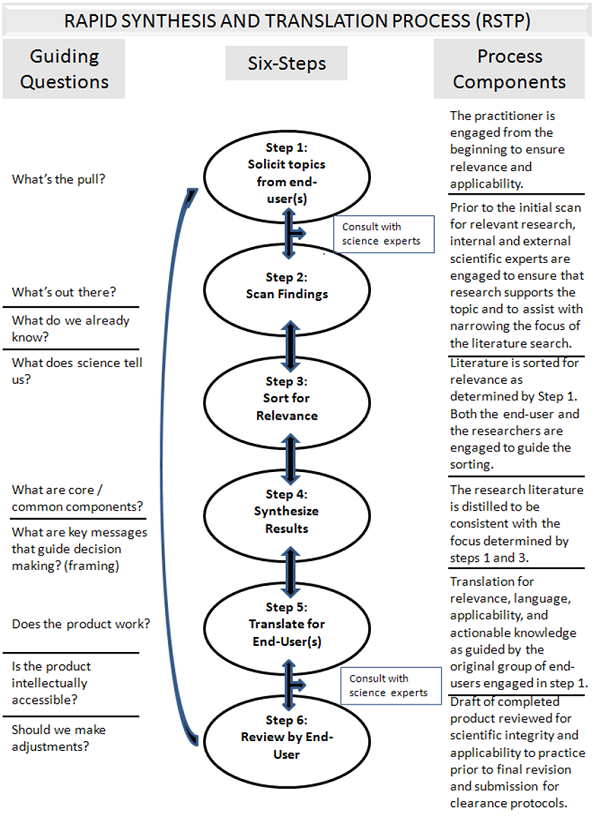Hello. My name is Sally Thigpen and I work in the National Center for Injury Prevention and Control (NCIPC) at the Centers for Disease Control and Prevention (CDC). As an evaluator, I often find myself encouraging scientists and stakeholders to think about evaluation from the very beginning of any study or project. I do whatever I can to be included as early as possible so I can help build evaluation into every step of the process. The value of inclusion is equally true for our practice partners. They need to be included as early as possible in our scientific thinking because they are vital to the translation of research to practice. Practitioners speak to the relevance and utility of the science and the value it has to current programmatic or policy efforts. In today’s budgetary realities, understanding these practical aspects of uptake helps assure limited dollars have the maximum impact.
The Division of Violence Prevention within NCIPC developed the Rapid Synthesis and Translation Process (RSTP) to systematize this communication loop between the research and the field of practice. This six-step process (in the graphic below) can help users facilitate the negotiation between the science and practical application.
Hot Tips:
- Before engaging with a group of practitioners, do a gut check with the scientists of record. Ask questions about what they see as the most valuable aspect of the study for practical application. What is their biggest apprehension about how the science might be misinterpreted and used in ways it was not intended? These answers not only help to focus the translation efforts, but also offer a little insight as you begin working with a selected group of practitioners.
- Work with the same group of practitioners from the beginning to the end of the translation process. Begin this relationship with similar questions from above. How do they anticipate using the science? What is the significant contribution to the field? What is least valuable?
- As the translational product moves through development, keep checking in with the group of practitioners and scientists. Practitioners can guide you on relevance and balancing science with action. The scientists can guide you in making sure you are keeping scientific integrity along the way.
Lesson Learned: You’re not just a communicator/evaluator/researcher – you’re a negotiator. In the role of translator, you are often negotiating between the details of pure science and the brevity of the practical world. This is a critical role and takes finesse.
Rad Resource: My colleagues and I published an article in a July 2012 special issue of the American Journal of Community Psychology reviewing RSTP’s usefulness in the field, Moving Knowledge into Action: Developing the Rapid Synthesis and Translation Process Within the Interactive Systems Framework.
he American Evaluation Association is celebrating Translational Research Evaluation (TRE) TIG week. All posts this week are contributed by members of the TRE Topical Interest Group. Do you have questions, concerns, kudos, or content to extend this aea365 contribution? Please add them in the comments section for this post on the aea365 webpage so that we may enrich our community of practice. Would you like to submit an aea365 Tip? Please send a note of interest to aea365@eval.org. aea365 is sponsored by the American Evaluation Association and provides a Tip-a-Day by and for evaluators.

